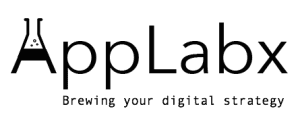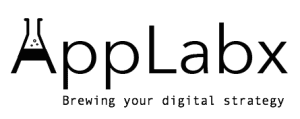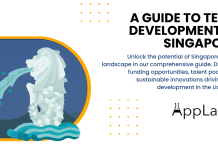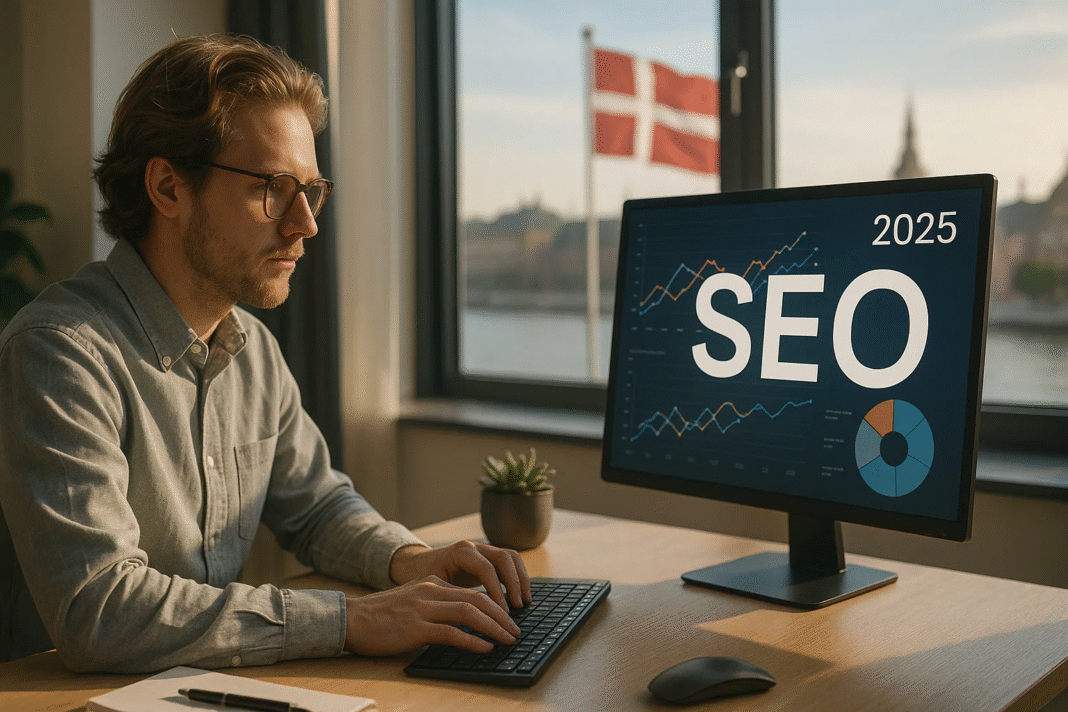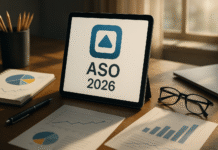Key Takeaways
- Google dominates Denmark’s search market, making mobile-first optimization and technical SEO essential for visibility and rankings.
- Localized content, native-language keywords, and a strong Google Business Profile are critical for capturing high-intent Danish audiences.
- Compliance with GDPR and Danish marketing laws, combined with strategic link-building and video content, drives credibility and long-term SEO success.
The State of SEO in Denmark in 2025 reflects a digital landscape that is both highly advanced and uniquely localized, offering opportunities and challenges that demand strategic precision. Denmark, with its digitally mature population, near-universal internet penetration, and world-class connectivity, represents one of Europe’s most competitive search engine environments. Businesses seeking to thrive in this market must understand that SEO is no longer merely a technical exercise—it is a multifaceted discipline that blends technical performance, content relevance, local insight, and regulatory compliance into a cohesive digital strategy.
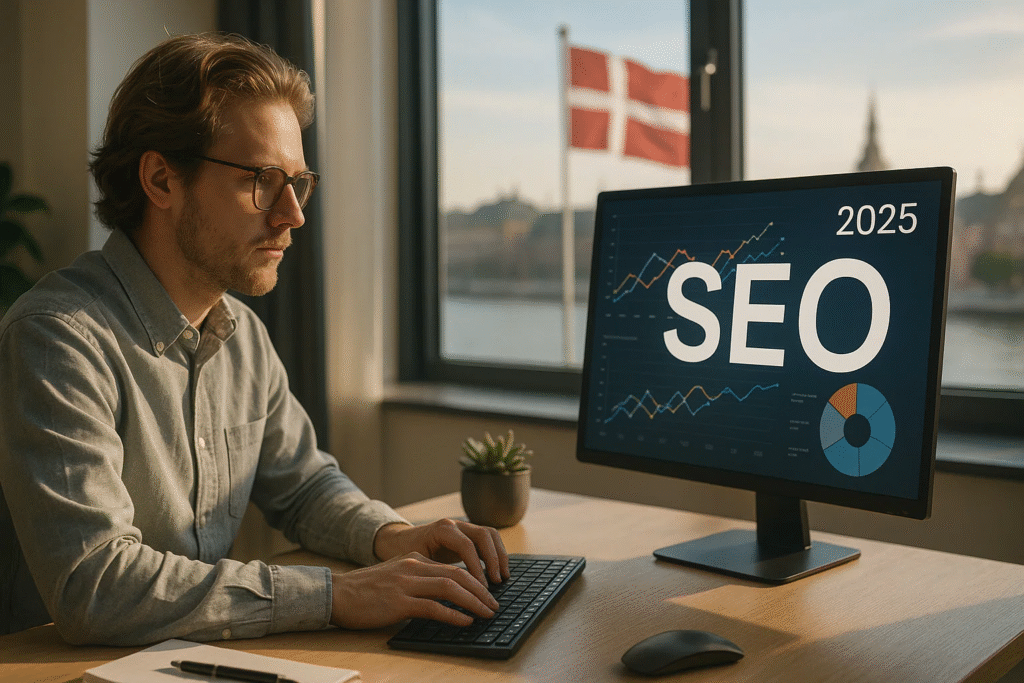
The Danish search market is dominated by Google, which controls over 90% of all search traffic across devices. This overwhelming market share emphasizes that any SEO effort in Denmark must prioritize Google’s ranking algorithms, particularly its mobile-first indexing and Core Web Vitals performance metrics. However, within this dominance, user behavior reveals nuanced trends. While a significant portion of searches occurs on the global google.com domain, a smaller yet highly valuable segment utilizes google.dk, signaling strong local intent. Understanding these patterns is crucial for businesses that aim to balance international keyword targeting with localized content optimized for Danish users.
Denmark’s digital infrastructure is a cornerstone of its SEO landscape. The country boasts some of the fastest mobile and fixed broadband speeds in the world, combined with near-total digital engagement—99% internet penetration among a population of 5.99 million. Mobile device adoption exceeds population figures, reflecting a market where multi-device usage is commonplace. These metrics underscore the importance of mobile optimization, fast-loading pages, and responsive design, which directly impact user experience and search engine rankings. Businesses that fail to meet these high technical standards risk reduced visibility, high bounce rates, and diminished conversion opportunities.
Equally important is understanding Danish consumer behavior and digital trends. The population exhibits a high level of trust in online services, with widespread adoption of social media and e-commerce. Platforms such as TikTok and YouTube are reshaping content consumption patterns, while online shopping remains robust, with more than 80% of Danes aged 16–74 having completed a purchase online in the past year. These trends indicate that effective SEO strategies must extend beyond traditional search optimization to integrate content marketing, video, and social media engagement. High-quality, localized content tailored to Danish linguistic and cultural norms is essential for building credibility and connecting with audiences.
Regulatory and legal frameworks in Denmark add an additional layer of complexity. Compliance with GDPR, the Danish Marketing Practices Act, and strict cookie regulations is not optional; it is a foundational requirement for operating in the Danish digital market. Missteps in data privacy, advertising disclosure, or consent management can lead to significant fines and reputational damage. Consequently, SEO strategies in Denmark must integrate technical, legal, and ethical considerations to maintain both search visibility and consumer trust.
The financial landscape of SEO services and talent further influences strategic planning. Professional SEO in Denmark requires significant investment, whether through hiring in-house specialists or engaging agencies. Salaries for local SEO experts reflect the high cost of living and competitive demand for skilled professionals, while agency services vary widely based on complexity, scope, and authority-building objectives. Effective budgeting and resource allocation are critical for businesses aiming to achieve sustainable results in this sophisticated market.
Looking forward, the state of SEO in Denmark is shaped by emerging trends such as AI-driven search, hyper-personalized content, voice search, and sustainability-conscious algorithms. Companies that proactively adopt these innovations, while maintaining technical excellence, local relevance, and regulatory compliance, will gain a competitive edge. SEO in Denmark in 2025 is therefore not a static practice—it is a dynamic, integrated discipline that requires continuous monitoring, adaptation, and strategic foresight.
In summary, mastering SEO in Denmark in 2025 demands a holistic approach: understanding market dominance, leveraging high-speed digital infrastructure, catering to culturally nuanced user behavior, ensuring legal compliance, and investing wisely in professional services. For businesses prepared to navigate this complex landscape, Denmark represents a market of immense potential, where well-executed SEO can drive visibility, engagement, and measurable growth.
But, before we venture further, we like to share who we are and what we do.
About AppLabx
From developing a solid marketing plan to creating compelling content, optimizing for search engines, leveraging social media, and utilizing paid advertising, AppLabx offers a comprehensive suite of digital marketing services designed to drive growth and profitability for your business.
At AppLabx, we understand that no two businesses are alike. That’s why we take a personalized approach to every project, working closely with our clients to understand their unique needs and goals, and developing customized strategies to help them achieve success.
If you need a digital consultation, then send in an inquiry here.
Or, send an email to [email protected] to get started.
The State of SEO in Denmark in 2025
- Executive Summary: Key Findings & Strategic Recommendations
- The Danish Digital Ecosystem and Search Market Landscape
- Foundational SEO Pillars: A Strategic Framework for Denmark
- The Economics and Regulatory Landscape of Danish SEO
- Strategic Outlook and Recommendations for 2025 and Beyond
- Actionable Recommendations for Success
1. Executive Summary: Key Findings & Strategic Recommendations
Denmark in 2025 exemplifies a digitally mature market with extraordinary connectivity, high consumer sophistication, and an intricate regulatory framework. For businesses aiming to optimize their search presence, the environment presents a unique combination of opportunities and challenges, requiring a multi-dimensional SEO strategy beyond conventional keyword targeting.
Key Observations
- Market Maturity and Digital Penetration
- Denmark exhibits near-universal internet access across all demographics, creating a highly competitive digital ecosystem.
- The population is exceptionally mobile-centric, supported by:
- 9.07 million cellular connections – equivalent to 151% of the total population, indicating multiple device usage per individual.
- Median mobile download speeds of 162.22 Mbps, enabling fast, seamless access to digital content.
- Implication: Mobile optimization and technical SEO are not optional but essential for maintaining high user engagement and search engine rankings.
- Search Engine Dominance
- Google commands over 90% market share, slightly surpassing the global average of 89.57%.
- Alternative search engines hold negligible influence, reinforcing Google as the definitive gateway to Denmark’s online audience.
- Strategic takeaway: SEO campaigns must prioritize Google’s evolving algorithms, Core Web Vitals, and AI-driven search features.
SEO Services Market Overview
- Segmentation and Pricing
- Professional SEO retainers typically range from $1,000 to $5,000 per month, while large-scale campaigns can escalate to $50,000–$199,999.
- Cost structures reflect the advanced skill set required, particularly for technical SEO, content localization, and cross-platform integration.
- Talent Distribution
- In-house SEO specialists in Copenhagen: average gross annual salary of 545,915 DKK.
- Remote or outsourced SEO specialists: significantly lower median compensation, presenting a trade-off between local expertise and cost efficiency.
| SEO Service Type | Median Monthly Retainer | Large-Scale Project Cost | Notes |
|---|---|---|---|
| Technical SEO | $1,500 | $50,000–$199,999 | Site architecture, speed, mobile optimization |
| Content & Localization | $1,000–$3,000 | $60,000+ | Focus on Danish language nuances, semantic SEO |
| Link Building & PR | $1,200–$4,000 | $70,000+ | Requires authoritative partnerships and local relevance |
| Analytics & Reporting | $1,000 | $50,000+ | Advanced monitoring, data compliance integration |
Regulatory Landscape
- GDPR Enforcement
- The Danish Data Protection Agency (Datatilsynet) strictly enforces GDPR, penalizing violations such as:
- Failing to delete personal data upon request.
- Sending unsolicited marketing communications.
- Compliance is a continuous operational requirement for all digital campaigns.
- The Danish Data Protection Agency (Datatilsynet) strictly enforces GDPR, penalizing violations such as:
- Marketing Practices Act
- Prohibits “hidden advertising” and mandates explicit consent for cookies.
- Direct implication for SEO: Data collection and tracking strategies must be fully transparent, affecting user analytics and remarketing efforts.
Strategic Recommendations
- Adopt a holistic SEO strategy integrating:
- Technical excellence: mobile-first indexing, page speed optimization, structured data.
- Content localization: Danish language optimization, semantic relevance, culturally resonant messaging.
- Ethical link-building: authoritative partnerships aligned with Google’s guidelines.
- Regulatory compliance: ongoing monitoring to avoid GDPR and Marketing Practices Act penalties.
- Leverage local expertise where budget allows, especially for nuanced content creation, SEO audits, and competitive analysis, while balancing cost-efficiency via selective remote or freelance resources.
2. The Danish Digital Ecosystem and Search Market Landscape
A. Search Market Dominance: Google’s Unrivaled Position
Denmark in 2025 presents one of the most technologically advanced and digitally integrated markets in Europe. Its search ecosystem demonstrates both unique user behaviors and highly concentrated search engine dominance, which necessitates a strategic, multi-layered approach to SEO.
Search Market Dominance: Google’s Unparalleled Authority
- Google’s Market Share
- Google maintains an overwhelmingly dominant position, controlling 90.52% of the Danish search market across all devices as of July 2025.
- This surpasses its global average of 89.57%, highlighting Denmark as a highly Google-centric digital environment.
- Domain-Level Usage Insights
- Analysis of host-level traffic reveals nuanced user behavior:
- google.com (International domain): 85.94% of total searches.
- google.dk (Local Danish domain): 4.18% of total searches.
- Desktop-specific behavior further emphasizes this trend:
- google.com: 75.2% of desktop searches.
- google.dk: 8.65% of desktop searches.
- Analysis of host-level traffic reveals nuanced user behavior:
- Strategic Implications
- High usage of google.com indicates Danish users frequently access global content or perform searches in English, necessitating optimization for international or broadly relevant keywords.
- Traffic directed to google.dk reflects strong local intent, including searches for Danish-specific services, businesses, and news.
- A robust Danish SEO strategy therefore requires a dual-faceted approach:
- Global SEO optimization targeting international domains and English-language search behavior.
- Local SEO focus for high-value, Denmark-specific queries, including Danish-language content and regionally targeted landing pages.
Competitive Landscape: Minor Search Engine Players
- The remainder of the Danish search market is divided among several smaller engines:
- Bing: 4.78%
- Yandex: 1.5%
- DuckDuckGo: 1.45%
- Yahoo!: 1.14%
- Ecosia: 0.34%
- Given Google’s near-monopoly, any SEO strategy must prioritize Google’s algorithm updates, ranking factors, and search behavior trends above alternative search engines.
Search Engine Market Share Overview
| Search Engine | Total Market Share (All Devices, July 2025) | Host-Level Market Share (All Devices, July 2025) |
|---|---|---|
| 90.52% | google.com: 85.94%, google.dk: 4.18% | |
| Bing | 4.78% | bing.com: 4.77% |
| Yandex | 1.5% | yandex.ru: 1.09% |
| DuckDuckGo | 1.45% | duckduckgo.com: 1.45% |
| Yahoo! | 1.14% | dk.search.yahoo.com: 0.83% |
| Ecosia | 0.34% | – |
Key Takeaways for SEO in Denmark
- Prioritize Google Optimization: SEO efforts should focus on Google’s ranking signals, including Core Web Vitals, AI-enhanced search, and mobile-first indexing.
- Dual Optimization Strategy: Balance between international/global keyword targeting on google.com and localized content optimization on google.dk.
- Understand User Intent: International domain usage suggests global content consumption, while the local domain signals high-value, local search opportunities.
- Minimal Impact from Secondary Search Engines: While alternative engines exist, their market influence is negligible, reinforcing Google as the sole strategic priority.
B. The Mobile-First Digital Infrastructure
Denmark’s digital environment in 2025 represents one of the most advanced and mobile-centric markets globally. Its near-universal connectivity, combined with exceptionally high-speed infrastructure, fundamentally shapes both user behavior and SEO requirements. Understanding this landscape is critical for any business aiming to establish a strong digital presence.
Market Connectivity and Digital Maturity
- Population and Internet Engagement
- Total population: 5.99 million
- Active internet users: 5.93 million, reflecting 99.0% penetration
- Implication: Denmark’s market is nearly universally connected, creating a highly competitive environment for online visibility and SEO campaigns.
- Mobile Dominance
- Active cellular connections: 9.07 million, equivalent to 151% of the total population
- The high number of connections indicates widespread multi-device usage, facilitated by technologies such as eSIMs.
- Google’s mobile-first indexing principle makes mobile optimization critical; sites failing to provide seamless mobile experiences face ranking penalties.
High-Speed Internet: Expectations and Impact on SEO
- Mobile Internet Performance
- Median mobile download speed: 162.22 Mbps, an increase of 10.3% year-over-year
- Specific city data:
- Frederiksberg: fastest median mobile speed at 285.39 Mbps
- Fixed Internet Performance
- Median fixed download speed: 237.95 Mbps, up 13.6% from the previous year
- Aarhus leads in fixed connectivity at 243.35 Mbps
- User Behavior Implications
- High-speed connectivity sets an elevated standard for website performance.
- Slow-loading sites, even by a second or two, result in higher bounce rates due to user expectations for near-instantaneous content access.
- Google’s Core Web Vitals (Largest Contentful Paint, Cumulative Layout Shift, and Interaction to Next Paint) directly reflect a website’s ability to meet these expectations.
Strategic Takeaways for SEO
- Mobile Optimization: Essential for ranking success due to mobile-first indexing.
- Technical Optimization: Fast-loading pages, visual stability, and interactive responsiveness are critical for user retention.
- City-Level Targeting: Considering speed variations across cities, regional technical optimization can enhance local user experience.
Denmark’s Digital Metrics Snapshot (Early 2025)
| Digital Metric | Value |
|---|---|
| Population | 5.99 million |
| Internet Users | 5.93 million |
| Internet Penetration | 99.0% |
| Cellular Mobile Connections | 9.07 million |
| Mobile Penetration (Relative to Population) | 151% |
| Median Mobile Download Speed | 162.22 Mbps |
| Median Fixed Download Speed | 237.95 Mbps |
This overview demonstrates that technical and mobile optimization are not optional in Denmark’s 2025 digital market—they are prerequisites for SEO success. Businesses targeting this audience must ensure ultra-fast load times, fully responsive design, and adherence to Core Web Vitals to remain competitive.
C. Advanced Digital Behavior and Consumer Trends
Denmark’s digital ecosystem in 2025 is shaped not only by infrastructure but also by sophisticated consumer behavior. Understanding these patterns is critical for crafting SEO strategies that resonate with a digitally mature and highly engaged population.
Digital Trust and Engagement
- Cultural Acceptance of Digital Services
- Danish citizens demonstrate a high level of trust in online systems.
- 81% of the population perceives digitalization of public and private services as a means of simplifying daily life.
- Implication: Businesses can confidently leverage digital channels as primary engagement points for both marketing and service delivery.
- Social Media Adoption
- Active social media users: 4.69 million, representing 78.3% of the total population.
- Platform trends:
- Traditional platforms like YouTube and Facebook experienced a slight decrease in advertising reach from 2024 to 2025.
- Emerging platforms like TikTok saw significant user growth, reflecting evolving consumer attention and content consumption patterns.
- Strategic takeaway: SEO campaigns must integrate with social media marketing to capture multi-platform audience engagement.
E-Commerce and Digital-First Consumer Behavior
- Online Shopping Penetration
- 82% of Danes aged 16–74 made an online purchase in the past year, underscoring a robust e-commerce landscape.
- Implication: SEO is directly tied to revenue generation; optimizing product pages, category structures, and local search visibility can drive tangible business outcomes.
- Multi-Channel Digital Journeys
- Users often engage with brands across several digital touchpoints before converting.
- Key considerations for SEO strategies:
- Conversion optimization beyond search engine traffic.
- Integration with social media campaigns to guide users along their journey.
- Seamless website experience, including mobile responsiveness and fast load times.
Strategic Insights for SEO
- Holistic Approach Required
- SEO must be part of a broader digital ecosystem rather than an isolated activity.
- High digital literacy among the Danish population demands authoritative content, trust-building mechanisms, and cross-platform engagement.
- Content and Engagement Optimization
- Develop content that satisfies both informational and transactional user intent.
- Leverage social proof, reviews, and localized messaging to reinforce credibility.
- Ensure consistent branding and messaging across search, social media, and website platforms.
Danish Digital Behavior Metrics (Early 2025)
| Metric | Figure | Insight |
|---|---|---|
| Digital Service Adoption | 81% | Strong trust in digital-first engagement |
| Active Social Media Users | 4.69 million | 78.3% of population; social platforms are critical channels |
| Online Purchase Rate (Age 16–74) | 82% | E-commerce adoption is near-universal; SEO impacts revenue directly |
| Emerging Platform Growth | TikTok | Increasing relevance for user engagement and content marketing |
| Declining Platforms | YouTube, Facebook | Shifts in ad reach; requires adaptive marketing strategy |
Key Takeaways
- Danish consumers are highly digitally literate and responsive to integrated online strategies.
- SEO success depends on cross-channel optimization, blending search, social media, and e-commerce strategies.
- Understanding local digital behavior, evolving platform trends, and multi-device usage is essential for building a trusted and authoritative online presence.
3. Foundational SEO Pillars: A Strategic Framework for Denmark
A. Technical SEO: The Imperative of Speed and Stability
In Denmark’s highly advanced digital environment, technical SEO serves as the indispensable foundation for any successful online strategy. The combination of high-speed infrastructure, mobile-centric usage, and sophisticated user expectations makes technical excellence a non-negotiable requirement for visibility, engagement, and conversions.
High-Speed Performance as a Market Expectation
- User Expectations
- Median mobile download speed: 162.22 Mbps
- Median fixed download speed: 237.95 Mbps
- Implication: Danish users are accustomed to near-instantaneous content access. Websites failing to meet these performance benchmarks risk high bounce rates, lower dwell times, and lost conversions.
- Core Web Vitals as Key Performance Indicators
- Largest Contentful Paint (LCP): Measures page load speed. Research shows that websites loading in 1 second achieve 3–5x higher conversion rates than pages loading in 5–10 seconds.
- Cumulative Layout Shift (CLS): Tracks visual stability. Unexpected layout shifts create frustration and perceived unreliability.
- Interaction to Next Paint (INP): Monitors responsiveness of interactive elements. Slow reactions signal poor site quality and can immediately drive users away.
Crawlability and Indexation
- Optimized Site Structure
- Logical hierarchy for pages, categories, and internal links ensures efficient bot crawling.
- Creation and submission of an up-to-date XML sitemap to facilitate indexing.
- Error Identification and Resolution
- Regular audits to identify:
- Broken links
- 404 errors
- Redirect chains
- Proactive issue resolution ensures consistent digital health and prevents ranking penalties.
- Regular audits to identify:
- Performance Monitoring Tools
- Utilize analytical tools (e.g., GTmetrix) to:
- Diagnose speed bottlenecks
- Monitor page load times
- Evaluate visual stability and interactivity
- Actionable insights from these tools allow for continuous technical optimization, keeping websites aligned with high market standards.
- Utilize analytical tools (e.g., GTmetrix) to:
Strategic Takeaways for Danish SEO
- Speed Optimization
- Minimize server response times, compress images, and leverage caching for rapid content delivery.
- Visual and Interactive Stability
- Prioritize stable layouts, smooth animations, and responsive design to retain user trust and engagement.
- Ongoing Technical Maintenance
- Adopt a routine of technical audits and iterative improvements, rather than ad-hoc fixes.
- Ensure compatibility with both desktop and mobile devices, reflecting Denmark’s mobile-first user behavior.
Technical SEO Performance Matrix for Denmark 2025
| Technical Aspect | Recommended Benchmark | Strategic Impact |
|---|---|---|
| Largest Contentful Paint | <2.5 seconds | Higher conversion rates, improved search rankings |
| Cumulative Layout Shift | <0.1 | Enhanced user experience, reduced bounce rates |
| Interaction to Next Paint | <200 ms | Increased responsiveness, improved engagement |
| Crawlability | Complete, logical site hierarchy | Improved indexing and discoverability |
| Error Management | Zero critical errors (404s, redirects) | Sustained SEO performance, better user trust |
Key Insights
- Technical SEO in Denmark is foundational, not supplementary.
- Meeting high-speed and stability expectations directly influences search rankings, conversions, and brand credibility.
- Ongoing monitoring and iterative technical improvements are mandatory to maintain competitiveness in the Danish digital landscape of 2025.
B. On-Page & Content Strategy: Catering to the Danish Audience
In Denmark’s highly competitive digital landscape of 2025, technical SEO lays the groundwork, but on-page optimization and content strategy form the bridge that connects brands to their audience meaningfully. Achieving success requires both cultural intelligence and linguistic precision.
Linguistic and Cultural Considerations
- Localized Keyword Research
- Danish language structure is distinct, often relying on compound words that convey specific search intent.
- Example: “best restaurant in Copenhagen” translates to “bedste restauranter i København”, illustrating the need for precise localization to capture intent-driven traffic.
- Failure to account for these patterns can result in missed opportunities for high-value search queries.
- Native Content Creation
- Content should be authored by native Danish speakers to ensure:
- Correct grammar and idiomatic usage.
- Authentic tone and cultural resonance.
- Alignment with local expectations of professionalism and credibility.
- Emphasis on a conversational yet professional style enhances user trust and engagement.
- Content should be authored by native Danish speakers to ensure:
Ethical and Legal Content Practices
- Compliance with Danish Marketing Regulations
- The Danish Marketing Practices Act prohibits hidden advertising and mandates explicit disclosure of commercial intent.
- Content marketing strategies must shift from aggressive or deceptive techniques toward transparent, value-driven content.
- Building Credibility
- Ethically sound content strengthens brand reputation and fosters consumer trust.
- Transparency in blogs, social media, and other digital assets enhances long-term engagement and search engine performance.
Strategic On-Page SEO Practices
- Content Structuring
- Use clear headings, bullet points, and schema markup to enhance readability and search visibility.
- Align content with search intent: informational, transactional, and navigational queries must be addressed distinctly.
- Internal Linking
- Implement logical internal linking structures to guide users and search engines through the site efficiently.
- Anchor text should reflect localized keywords for maximum SEO impact.
- Multimedia Integration
- Optimize images, infographics, and videos with Danish-language alt text and descriptive captions.
- Multimedia enhances engagement, dwell time, and content richness for both users and search engines.
On-Page SEO and Content Strategy Matrix for Denmark 2025
| SEO Element | Best Practices | Strategic Impact |
|---|---|---|
| Keyword Research | Localized Danish terms, compound word recognition | Captures high-intent traffic |
| Content Creation | Native authors, conversational-professional tone | Enhances credibility and audience engagement |
| Compliance & Transparency | Clear commercial disclosure, ethical messaging | Builds trust, aligns with legal requirements |
| Internal Linking | Logical structure with local anchor text | Improves crawlability, distributes page authority |
| Multimedia Optimization | Alt tags, captions, and descriptive metadata | Boosts engagement, supports SEO and accessibility |
Key Takeaways
- On-page and content strategy in Denmark must combine linguistic accuracy, cultural understanding, and legal compliance.
- Content that is localized, transparent, and value-driven not only improves search engine rankings but also strengthens brand authority.
- Success in the Danish market requires continuous adaptation to local preferences, evolving search intent, and regulatory expectations, making on-page optimization a dynamic and strategic priority for 2025.
C. Local SEO: Capturing the High-Intent “Near Me” Market
In Denmark’s digitally mature landscape of 2025, local SEO has evolved into a critical revenue-generating channel for businesses with a physical presence. The convergence of mobile dominance, sophisticated consumer behavior, and high-value local searches has made local search optimization an essential component of any comprehensive SEO strategy.
The Rising Importance of Local Search
- Mobile-Centric Consumer Behavior
- Denmark’s mobile penetration exceeds 151%, indicating widespread multi-device usage.
- Mobile searches with local intent account for four out of five queries, reflecting the population’s reliance on location-specific information.
- “Near me” searches have surged by over 900%, demonstrating a robust and actionable market for local businesses.
- High Conversion Potential
- 88% of users who conduct a local search on smartphones visit or contact a store within 24 hours.
- Implication: Local SEO is not only about visibility—it is a direct path to revenue and customer acquisition.
Core Components of Local SEO Strategy
- Google Business Profile (GBP) Optimization
- Complete and regularly updated Name, Address, and Phone (NAP) information is a primary ranking signal.
- Features such as photos, business hours, posts, and Q&A enhance engagement and improve local rankings.
- Local Citations and Directory Listings
- Presence on reputable Danish directories such as Krak.dk and DeGulesider reinforces authority and trustworthiness.
- Verified and up-to-date listings act as credibility signals to search engines, improving local ranking potential.
- Example: Krak.dk offers free updates for verified businesses, making it a strategic tool for consistent local information management.
- Proactive Review Management
- Responding to both positive and negative reviews demonstrates active customer engagement.
- Positive social proof significantly impacts consumer trust and decision-making in local searches.
- Regular review solicitation and management are critical for sustaining credibility in a market that highly values reliability.
Local SEO Optimization Matrix for Denmark 2025
| Local SEO Element | Best Practices | Strategic Impact |
|---|---|---|
| Google Business Profile | Complete NAP, high-quality photos, regular posts, Q&A | Boosts visibility, engagement, and map pack rankings |
| Local Citations | Verified listings on Krak.dk, DeGulesider, and similar sites | Strengthens authority, trust, and search engine signals |
| Review Management | Prompt responses to positive and negative reviews | Enhances credibility and encourages consumer action |
| Mobile Optimization | Fast-loading, responsive pages for local searches | Improves rankings, conversions, and user satisfaction |
| Location-Specific Content | Address-specific landing pages with localized keywords | Captures high-intent traffic and increases conversions |
Key Takeaways
- Local SEO in Denmark is a high-conversion, high-impact discipline, especially in mobile-driven markets.
- Optimizing Google Business Profiles, maintaining authoritative directory listings, and managing reviews proactively are core requirements for local visibility.
- Businesses that execute a transparent, credible, and localized strategy can directly convert search intent into foot traffic, calls, and purchases.
- As search behavior continues to evolve, integrating local SEO with broader digital marketing initiatives ensures sustained competitive advantage in 2025 and beyond.
D. Off-Page SEO: The Economics and Strategy of Link Building
In Denmark’s digital market of 2025, off-page SEO—primarily focused on acquiring high-quality backlinks—remains a cornerstone for establishing website authority, trust, and long-term search visibility. This domain requires both strategic planning and significant financial investment, particularly given the country’s highly competitive and digitally sophisticated environment.
The Strategic Importance of Link Building
- Authority and Trust Signals
- High-quality backlinks serve as one of the most influential ranking factors for Google, signaling domain authority, credibility, and relevance.
- Danish SEO professionals allocate approximately 28% of their total SEO budget specifically to link-building campaigns, reflecting its critical role in overall strategy.
- Conversion and Visibility Impact
- Authoritative backlinks from reputable Danish publications, blogs, and industry-specific websites improve:
- Organic search visibility
- Referral traffic
- Brand credibility and recognition within local and international markets
- Authoritative backlinks from reputable Danish publications, blogs, and industry-specific websites improve:
Cost Structures and Market Segmentation
- Professional Link-Building Services
- Small business campaigns: $1,000–$2,500 per month
- Enterprise-level campaigns: $3,000+ per month
- Project-based campaigns: $3,000–$25,000 per month
- Average cost per high-quality link: $370, with links from DA80+ sites averaging $380
- Low-Cost, High-Risk Alternatives
- Bulk backlink packages can be found for as low as 8.33 DKK ($1.20 USD) per link or 28.77 DKK for 10,000 links.
- These options often rely on Private Blog Networks (PBNs) or irrelevant sites, presenting substantial risk:
- Manual penalties from Google
- Potential complete de-indexing
- Insight: “Quality over quantity” is a strategic imperative in the Danish SEO landscape.
Best Practices for Danish Off-Page SEO
- Targeted Outreach
- Identify authoritative local publications, industry blogs, and high-DA websites relevant to the business niche.
- Build relationships with reputable content creators to earn editorial backlinks.
- Content-Driven Link Acquisition
- Develop high-value, shareable content such as:
- Expert guides and research reports
- Interactive tools and resources
- Localized case studies and success stories
- Purpose: Earn natural backlinks while reinforcing brand credibility and authority.
- Develop high-value, shareable content such as:
- Monitoring and Risk Mitigation
- Regularly audit backlinks to detect low-quality or toxic links.
- Disavow harmful links to protect domain authority and prevent search engine penalties.
Off-Page SEO Investment Matrix for Denmark 2025
| Component | Budget Range (Monthly) | Strategic Impact |
|---|---|---|
| Small Business Campaigns | $1,000–$2,500 | Builds baseline authority, local visibility |
| Enterprise-Level Campaigns | $3,000+ | Enhances large-scale brand authority and reach |
| Project-Based High-Authority Links | $3,000–$25,000 | Acquires high-DA backlinks from authoritative sites |
| Low-Cost Bulk Links | 8.33 DKK per link | High risk; may trigger penalties or de-indexing |
| Quality vs Quantity Focus | Professional, strategic links | Maximizes ROI, maintains long-term search stability |
Key Takeaways
- Off-page SEO in Denmark is both a financial and strategic investment, not an optional supplement.
- High-quality backlinks from reputable, relevant sources are critical to authority building, brand trust, and search visibility.
- Low-cost, bulk link schemes carry substantial risk and can undermine long-term SEO efforts.
- Strategic, content-driven link acquisition ensures sustainable growth and competitive advantage in the Danish digital ecosystem of 2025.
4. The Economics and Regulatory Landscape of Danish SEO
A. Financial Analysis of SEO Services
The Danish SEO market in 2025 represents a mature, highly segmented ecosystem where pricing reflects agency size, specialization, and the scope of services offered. Businesses looking to invest in SEO must carefully understand these financial structures to align expenditure with strategic objectives and expected returns.
Pricing Structures and Hourly Rates
- Freelancers and Small Agencies
- Hourly rates: 500–800 DKK
- Suitable for small to medium-sized businesses aiming for cost-effective local or niche campaigns.
- Medium-Sized Agencies
- Hourly rates: 800–1,500 DKK
- Provide a broader range of services with more sophisticated tools and reporting capabilities.
- Large and Top-Tier Agencies
- Hourly rates: 1,500–2,000 DKK
- Typically serve enterprise clients with complex campaigns and multi-channel strategies.
- Median Monthly Retainer
- Professional SEO campaigns range between $1,000 and $5,000 per month, reflecting recurring work such as content creation, technical optimization, and performance monitoring.
Project-Based Investment
- Simple Websites
- Cost range: 20,000–50,000 DKK
- Typically involves basic technical SEO, on-page optimization, and content setup.
- Complex E-Commerce Platforms
- Cost range: 50,000–150,000 DKK
- Includes advanced technical SEO, multi-language support, structured data, and ongoing optimization.
- Agency Project Distribution
- Demonstrates market segmentation and investment tiers:
| Agency Name | Project Cost Breakdown (2025) | Insights |
|---|---|---|
| High Voltage SEO | <$10,000: 10 projects; $10,000–$49,000: 6 projects | Focuses on small to mid-sized projects |
| Ninja Promo | $50,000–$199,999: 19 projects; $10,000–$49,000: 8 projects | Serves both medium and large enterprises |
| Obsidian Digital A/S | <$10,000: 1 project; $50,000–$199,999: 1 project | Operates across small and high-value projects |
| LAZZAWEB | $50,000–$199,999: 1 project; $200,000–$999,999: 1 project | Specializes in large-scale, enterprise-level campaigns |
Key Insights for Businesses
- No Single Average Cost
- SEO investment in Denmark is highly variable and depends on:
- Business goals
- Digital platform complexity
- Required service level and expertise
- SEO investment in Denmark is highly variable and depends on:
- Small Business Strategy
- Local or niche-focused campaigns can start at a few thousand dollars, making SEO accessible for smaller enterprises.
- Enterprise Strategy
- Large e-commerce businesses or brands targeting national expansion must budget for multi-channel campaigns potentially exceeding six figures.
- Budget Allocation Considerations
- Technical optimization, content creation, link-building, and ongoing monitoring must be considered as part of a comprehensive SEO budget.
- Businesses must balance cost efficiency with the strategic impact of high-quality, sustainable SEO services.
SEO Financial Planning Matrix for Denmark 2025
| Business Type | Typical Investment Range | Recommended Agency Size/Type | Expected ROI Focus |
|---|---|---|---|
| Small Local Business | $1,000–$5,000/month | Freelancer or small agency | Local visibility, customer acquisition |
| Medium Enterprise | $5,000–$25,000/month | Medium-sized agency | Multi-channel optimization, regional reach |
| Large Enterprise | $50,000–$200,000+ per project | Top-tier agency | National expansion, high-authority positioning |
| E-Commerce Platforms | $50,000–$150,000+ | Specialized agency | Technical SEO, product visibility, conversions |
Strategic Takeaways
- The Danish SEO market is diverse and sophisticated, requiring careful budget planning aligned with business goals.
- Investment should be considered holistically, incorporating technical SEO, content strategy, link-building, and ongoing campaign management.
- Understanding agency pricing tiers and project-based costs ensures informed decision-making and maximizes the strategic impact of SEO expenditures in Denmark 2025.
B. Professional Salaries and the Talent Pool
The cost and availability of skilled SEO professionals in Denmark is a critical consideration for businesses planning strategic digital investments. The Danish labor market, especially in urban hubs such as Copenhagen, reflects a highly competitive environment where talent acquisition is both costly and pivotal for achieving SEO success.
In-House SEO Talent: Costs and Value
- Copenhagen-Based Specialists
- Average gross annual salary: 545,915 DKK (~$79,000 USD)
- Includes an average annual bonus of 16,323 DKK
- Salary reflects:
- High cost of living in the capital
- Elevated demand for digital marketing expertise
- Strategic value of local market knowledge and cultural insight
- Benefits of Local In-House Talent
- Deep understanding of Danish search behavior and language nuances
- Direct collaboration with cross-functional teams
- Immediate responsiveness to market trends, regulatory changes, and technical requirements
- Enhanced ability to craft locally optimized content that resonates with consumers
Remote SEO Talent: Cost-Efficiency Trade-Off
- Median Annual Salary for Remote Specialists
- Reported at $10,897 USD, with total employment costs (including taxes) at $11,910 USD
- Strategic Considerations
- Cost-efficient option for businesses with limited budgets
- Suitable for international or global campaigns where local Danish expertise is less critical
- Lack of proximity may limit cultural and linguistic optimization capabilities
- Requires robust remote management and communication systems to ensure quality
Talent Cost Comparison Matrix
| SEO Talent Type | Average Annual Salary | Employment Cost (Including Taxes) | Key Advantages | Key Trade-Offs |
|---|---|---|---|---|
| Copenhagen-Based In-House | 545,915 DKK (~$79,000 USD) | Included in salary | Local market knowledge, cultural nuance, in-person collaboration | High financial investment, competitive hiring market |
| Remote Specialist | $10,897 USD | $11,910 USD | Cost efficiency, flexible workforce, global talent pool | Limited local expertise, potential communication challenges |
Strategic Implications
- Investment Decision
- Hiring an in-house specialist in Copenhagen represents a premium investment, yielding high-quality localized strategies and stronger alignment with Danish consumer behavior.
- Remote specialists offer a budget-friendly alternative, ideal for businesses prioritizing cost savings or targeting broader, multi-country SEO campaigns.
- Talent Acquisition Considerations
- Companies must weigh the trade-offs between cost, local expertise, and strategic impact.
- For organizations seeking high-impact, market-specific campaigns in Denmark, investing in Copenhagen-based talent is often justified.
- Businesses with smaller budgets or a global focus may opt for remote talent but should implement strong oversight mechanisms to maintain performance standards.
Key Takeaways
- Denmark’s urban SEO labor market is highly competitive and financially demanding, particularly in Copenhagen.
- The choice between in-house and remote talent hinges on a company’s strategic objectives, budget constraints, and the necessity for local cultural and linguistic expertise.
- Effective talent allocation can significantly influence a business’s SEO performance, brand credibility, and digital growth trajectory in the Danish market of 2025.
C. Legal & Compliance: Navigating the GDPR and Danish Marketing Law
In Denmark, the legal and regulatory environment represents one of the most rigorous frameworks in Europe, serving as a decisive factor for the success and sustainability of digital marketing initiatives, including SEO. Compliance is not optional; it is a strategic necessity that protects businesses from substantial financial penalties, reputational damage, and operational disruption.
GDPR Compliance: Foundation for Data-Driven SEO
- Core Principles and Enforcement
- Denmark adheres strictly to the General Data Protection Regulation (GDPR), with enforcement overseen by the Danish Data Protection Agency (Datatilsynet).
- As of July 2025, proposed revisions aim to reduce compliance burdens for SMEs while retaining the core principles of transparency, consent, and data protection.
- Notable Enforcement Cases
- IDDesign A/S: Recommended fine of 1.5 million DKK for failing to delete obsolete personal data.
- Uptime-IT ApS: Reported to police for insufficient security measures as a data processor.
- These examples underscore the active monitoring of data-handling practices and the high stakes for non-compliance.
- Implications for SEO
- Collection of user data for analytics, personalization, or retargeting must adhere to GDPR.
- Proper consent management systems are mandatory to avoid fines and maintain user trust.
Danish Marketing Practices Act: Transparency and Ethical Content
- Key Requirements
- All content with commercial intent must be explicitly disclosed to consumers.
- “Hidden advertising,” in any media format—including blogs, social media posts, and digital campaigns—is strictly prohibited.
- Electronic marketing (emails, calls) requires explicit consent, with mandatory checks against the Robinson list to respect consumers’ preferences.
- Cultural Alignment
- Danish consumers highly value transparency and authenticity.
- Content marketing strategies must reflect these values by prioritizing clear disclosure and ethical communication.
Cookie Regulations: Analytics and SEO Measurement Challenges
- Consent Requirements
- Informed, specific, freely given, and unambiguous consent is mandatory before setting non-essential cookies.
- Cookie banners must present accept and reject options with equal visibility, prohibiting “nudging” techniques.
- Impact on SEO and Analytics
- Users opting out of cookies can reduce data available for tools like Google Analytics.
- SEO professionals must adjust performance tracking and reporting to account for incomplete datasets, which may affect ROI measurement and strategic decision-making.
- Strategic Recommendations
- Implement consent management platforms (CMPs) to streamline compliance and maintain accurate analytics.
- Prioritize transparent, high-value content that encourages voluntary user engagement without relying on intrusive tracking.
Legal Compliance Matrix for SEO in Denmark
| Regulatory Framework | Requirements | SEO & Marketing Implications |
|---|---|---|
| GDPR | Informed, explicit, and unambiguous consent for personal data | Limits data collection for analytics; necessitates consent management |
| Danish Marketing Practices Act | Clear disclosure of commercial intent; ban on hidden advertising | All content must transparently indicate sponsorship or commercial purpose |
| Cookie Guidelines | Equal visibility for accept/reject options; no nudging | Non-essential cookie use may be restricted; impacts SEO analytics and conversion tracking |
Strategic Takeaways
- Legal compliance is integral to SEO strategy in Denmark, not merely a regulatory requirement.
- Businesses must adopt proactive compliance measures, integrating consent management, transparent marketing practices, and ethical content creation into all SEO campaigns.
- Understanding the interplay between regulation and digital strategy ensures that SEO initiatives deliver results without exposure to fines or reputational risk.
5. Strategic Outlook and Recommendations for 2025 and Beyond
A. Emerging Trends and Predictions
The SEO landscape in Denmark in 2025 reflects a mature, digitally sophisticated market experiencing rapid technological evolution. Businesses seeking to maintain a competitive advantage must anticipate emerging trends, adapt their strategies, and integrate SEO with broader digital and societal dynamics.
Emerging Trends Shaping Danish SEO
- Hyper-Personalization and Conversational Search
- The widespread adoption of AI-driven tools such as ChatGPT is driving a surge in long-tail, intent-based search queries.
- Users increasingly expect precise answers rather than generic results, requiring SEO strategies to:
- Target multi-word, highly specific search terms
- Optimize content for voice search and natural language queries
- Integrate structured data and FAQ-rich content to capture snippet positions
- Brands that fail to adapt risk losing visibility to competitors leveraging AI-optimized content.
- Sustainability as a Search Signal
- Danish consumers are increasingly conscious of environmental and ethical business practices.
- Companies with transparent sustainability initiatives may benefit from indirect SEO advantages, as user engagement, click-through rates, and social shares reflect brand credibility.
- Businesses should embed SEO within a broader sustainability narrative, including:
- Demonstrable efforts to reduce digital carbon footprints
- Eco-friendly content delivery methods (e.g., optimized website energy efficiency)
- Promotion of green certifications and ethical initiatives
- Ongoing Legal and Compliance Considerations
- While proposed GDPR and ePrivacy simplifications may slightly reduce administrative burdens for SMEs, the core principles of data protection, user consent, and privacy remain enforceable.
- Businesses that proactively invest in compliance infrastructure (consent management, transparent data collection, and secure storage) are more likely to avoid penalties and build long-term consumer trust.
- Video Content and Multimedia Optimization
- Platforms like YouTube command 78.3% ad reach of the Danish population, highlighting the continued importance of visual content.
- Optimizing video for search involves:
- YouTube SEO: titles, descriptions, tags, and closed captions
- Embedding videos strategically on websites to improve dwell time, engagement, and page authority
- Creating multimodal content strategies integrating text, video, and interactive media to capture diverse search behaviors
Strategic Recommendations for Businesses
- Shift from Generic Keywords to Intent-Driven Phrases
- Focus on user intent, semantic relevance, and query context
- Integrate conversational content optimized for AI-assisted search tools
- Integrate SEO Within Broader Digital and Sustainability Narratives
- Highlight ethical practices and environmental commitments in website content
- Ensure these narratives are search-optimized, using structured data and schema markup
- Invest in Compliance as a Competitive Advantage
- Implement robust GDPR-compliant analytics systems
- Ensure explicit consent mechanisms for cookies, tracking, and marketing communications
- Regularly audit SEO campaigns for adherence to legal standards
- Leverage Video and Interactive Media
- Prioritize high-quality video content for both search engines and social platforms
- Embed videos to enhance on-page engagement metrics
- Optimize multimedia for page load speed and Core Web Vitals, aligning with Denmark’s mobile-first digital environment
Projected SEO Impact Matrix
| Trend/Factor | Strategic Focus | Expected Impact on SEO |
|---|---|---|
| AI-Driven Search & Voice Queries | Long-tail, intent-driven keywords, structured content | Higher SERP visibility, featured snippet capture |
| Sustainability & Ethical Branding | Integrate sustainability into content strategy | Enhanced user engagement, potential indirect ranking signals |
| GDPR & Compliance | Consent management, secure data collection | Avoid penalties, increase user trust and retention |
| Video & Multimedia | YouTube SEO, embedded video optimization | Increased dwell time, engagement metrics, cross-platform reach |
This forward-looking framework positions businesses to capitalize on evolving consumer behaviors, technological advancements, and regulatory requirements, ensuring that SEO remains a central component of digital strategy in Denmark through 2025 and beyond.
6. Actionable Recommendations for Success
Based on a thorough analysis of Denmark’s digital ecosystem, consumer behavior, and search market dynamics, the following strategic recommendations provide actionable guidance for businesses seeking to excel in SEO throughout 2025 and beyond.
Recommendations for Local Businesses
- Master Google Business Profile (GBP)
- Ensure the GBP is fully completed with accurate Name, Address, and Phone number (NAP) information across all digital touchpoints.
- Actively manage reviews by responding to both positive and negative feedback, signaling commitment to customer satisfaction.
- Leverage GBP features such as posts, offers, and Q&A sections to enhance engagement and local visibility.
- Build and Maintain Local Citations
- Systematically list business information on essential Danish directories, including Krak.dk and DeGulesider, to reinforce authority and verify legitimacy.
- Consistency across citations is critical for search engines to validate the business’s location and credibility.
- Optimize for High-Intent ‘Near Me’ Searches
- Focus on long-tail, transactional keywords targeting immediate consumer demand.
- Ensure content aligns with search intent to maximize the likelihood of customer visits or inquiries, capitalizing on the high conversion rate of local searches.
Recommendations for E-commerce and B2B Enterprises
- Prioritize Technical SEO Excellence
- Denmark’s high-speed, mobile-first digital environment demands optimized performance.
- Conduct regular technical audits, monitor Core Web Vitals, and maintain fast-loading, responsive pages to reduce bounce rates and improve rankings.
- Employ advanced tools to detect and resolve crawl errors, broken links, and redirect chains.
- Invest in Strategic, High-Quality Link Building
- Allocate up to 28% of SEO budgets to acquire authoritative backlinks from relevant Danish publications and reputable bloggers.
- Avoid low-cost bulk link schemes, which can jeopardize domain authority and risk Google penalties.
- Focus on quality over quantity, emphasizing links from high Domain Authority (DA) sources relevant to industry and locale.
- Implement Deep Localization
- Employ native Danish content specialists to craft linguistically precise, culturally resonant material.
- Ensure proper use of Danish compound words and idiomatic expressions for search relevancy.
- Maintain a professional, credible tone to establish trust with local audiences and align with cultural expectations.
Recommendations for All Businesses
- Legal and Regulatory Compliance as a Core Competency
- Treat GDPR, the Danish Marketing Practices Act, and strict cookie consent guidelines as fundamental operational requirements.
- Invest in both legal expertise and technical solutions to ensure compliant data collection, storage, and user tracking.
- Proactive compliance mitigates reputational risks and prevents substantial financial penalties from regulatory authorities.
- Continuous Monitoring and Agile Adaptation
- Track critical performance indicators, including organic traffic, keyword rankings, Core Web Vitals, and conversion metrics.
- Use analytical insights to pivot strategies in response to evolving search algorithms, market dynamics, or consumer trends.
- Regular testing and optimization ensure sustained competitive advantage in Denmark’s rapidly evolving digital market.
Strategic Implementation Matrix
| Business Type | Key Focus Areas | Recommended Actions | Expected Impact |
|---|---|---|---|
| Local Businesses | GBP, Local Citations, ‘Near Me’ Keywords | Complete GBP, manage reviews, list on local directories, optimize for transactional searches | Higher local visibility, increased foot traffic, enhanced conversion rates |
| E-commerce & B2B | Technical SEO, Link Building, Localization | Regular audits, monitor Core Web Vitals, acquire authoritative backlinks, hire native content specialists | Improved rankings, higher engagement, greater credibility |
| All Businesses | Legal Compliance, Monitoring & Adaptation | Ensure GDPR & marketing law compliance, track KPIs, adjust strategies dynamically | Risk mitigation, optimized SEO ROI, long-term sustainability |
This framework positions businesses to navigate Denmark’s advanced digital ecosystem effectively, combining local insights, technical rigor, and compliance strategies to maximize SEO impact and long-term growth.
Conclusion
Denmark’s digital landscape in 2025 reflects a market that is exceptionally advanced, highly connected, and increasingly sophisticated in both user behavior and technological infrastructure. The country’s near-universal internet penetration, robust mobile connectivity, and digitally savvy population create a fertile ground for businesses to leverage SEO as a primary channel for growth. However, the market’s maturity also introduces heightened expectations, increased competition, and rigorous regulatory oversight, making a strategic, multifaceted approach to SEO essential.
A Holistic Perspective on SEO in Denmark
- Search Market Concentration: Google maintains a dominant position in Denmark with over 90% market share, making it the central focus of any search marketing effort. This dominance underscores the need for businesses to prioritize Google-specific ranking factors, while also recognizing the nuanced distinction between the international google.com domain and the local google.dk domain to capture both global and local user intent.
- Mobile-First Imperative: The Danish populace exhibits mobile penetration exceeding 150%, paired with some of the fastest mobile and fixed internet speeds in Europe. Optimizing websites for mobile-first performance is no longer optional; technical speed, responsive design, and flawless user experience directly influence rankings, conversions, and brand perception.
- Advanced Consumer Behavior: Danish users display high digital literacy, trust in online services, and a strong inclination toward e-commerce. Social media adoption is widespread, and evolving trends indicate growing engagement with emerging platforms like TikTok, alongside established channels such as YouTube. This behavioral landscape necessitates an integrated SEO strategy that merges search optimization with content marketing, social engagement, and conversion-oriented design.
Key Strategic Imperatives
- Technical SEO and Performance Optimization: Core Web Vitals, structured data, page speed, and mobile responsiveness remain fundamental drivers of search visibility. Websites that fail to meet these technical standards risk high bounce rates, poor engagement, and lower rankings.
- Content Localization and Relevance: Crafting content that resonates with Danish audiences requires linguistic precision, cultural awareness, and ethical transparency. Native-level Danish content ensures accurate grammar, proper use of compound words, and credibility that aligns with both user expectations and legal frameworks such as the Danish Marketing Practices Act.
- Local SEO and High-Intent Targeting: For businesses with physical presence, optimizing for local search, “near me” queries, and Google Business Profile management is critical. High-intent local searches demonstrate exceptional conversion potential, and effective local SEO can directly drive foot traffic, phone inquiries, and immediate sales.
- Authority and Off-Page Signals: Link-building remains a key ranking signal in Denmark. Investing in high-quality backlinks from reputable Danish sources strengthens domain authority, improves search visibility, and mitigates risks associated with low-quality or bulk link schemes.
- Legal Compliance and Data Governance: Denmark’s stringent GDPR enforcement, cookie regulations, and marketing law create a high-stakes environment where non-compliance can result in severe financial penalties and reputational damage. SEO strategies must integrate data protection measures and consent management as core operational components.
Financial and Human Resource Considerations
- Professional Talent: Building a successful SEO team in Denmark requires a careful balance between cost, local expertise, and linguistic proficiency. The high salaries for in-house specialists in Copenhagen reflect the demand for local knowledge, while remote professionals may offer cost efficiencies but limited local insights.
- Service Investment: SEO in Denmark is a strategic investment rather than a transactional service. Businesses should expect variable pricing depending on agency expertise, project complexity, and campaign scope, with enterprise-level efforts potentially reaching six-figure budgets for comprehensive, multi-channel campaigns.
The Road Ahead
As AI-powered search, hyper-personalized content, and voice-enabled queries reshape the digital landscape, businesses in Denmark must remain agile and forward-thinking. SEO will continue to evolve from a purely keyword-driven practice to a holistic discipline encompassing technical excellence, content quality, user experience, local relevance, and ethical compliance. Organizations that integrate these components into a cohesive, data-driven, and legally compliant strategy will not only improve search visibility but also strengthen brand authority, enhance consumer trust, and drive sustainable growth.
Denmark’s SEO environment in 2025 is therefore both an opportunity and a challenge. The sophistication of the market rewards businesses that invest strategically in technical optimization, culturally resonant content, authoritative backlinks, and regulatory compliance. Conversely, those that fail to adapt risk being outpaced in a highly competitive digital ecosystem where user expectations and search engine standards are among the highest in the world.
In conclusion, SEO in Denmark is no longer a peripheral activity—it is a core business function that requires continuous investment, innovation, and adaptation. By understanding the nuances of the Danish market, prioritizing user experience, leveraging local insights, and adhering to legal standards, businesses can position themselves for long-term success and measurable digital growth in 2025 and beyond.
If you are looking for a top-class digital marketer, then book a free consultation slot here.
If you find this article useful, why not share it with your friends and business partners, and also leave a nice comment below?
We, at the AppLabx Research Team, strive to bring the latest and most meaningful data, guides, and statistics to your doorstep.
To get access to top-quality guides, click over to the AppLabx Blog.
People also ask
What is the current state of SEO in Denmark in 2025?
Denmark’s SEO landscape in 2025 is highly advanced, mobile-first, and Google-dominated, requiring technical optimization, localized content, and compliance with GDPR and Danish marketing laws for success.
Which search engine dominates Denmark in 2025?
Google commands over 90% of the search market in Denmark, making it the primary focus for all SEO strategies.
How important is mobile optimization for SEO in Denmark?
Mobile optimization is critical, as Denmark has 151% mobile penetration and extremely high-speed connections, making fast, responsive websites essential.
What role does local SEO play in Denmark?
Local SEO is vital for physical businesses, with “near me” searches driving high-intent traffic and immediate customer visits.
How should businesses approach Danish keyword research?
Keyword research must account for Danish language nuances, compound words, and intent-driven long-tail phrases for accurate targeting.
Is content localization important in Denmark?
Yes, content must be native-quality, culturally appropriate, and professionally written to build credibility and engage Danish audiences.
What are the key technical SEO requirements in Denmark?
Websites must meet Core Web Vitals standards (LCP, CLS, INP), ensure crawlability, fix broken links, and provide fast, stable mobile-first experiences.
How do Danish consumers engage with online content?
Danes are digitally savvy, trust online services, and frequently shop online, making high-quality content and user experience essential.
How significant is link building in Denmark?
High-quality backlinks are a major ranking factor; 28% of SEO budgets are allocated to authoritative link acquisition from relevant local sources.
What is the cost of SEO services in Denmark?
Monthly retainers range from $1,000–$5,000, with large projects reaching $50,000–$199,999 depending on complexity and scope.
What are typical salaries for SEO specialists in Denmark?
In-house SEO specialists in Copenhagen earn an average of 545,915 DKK per year, while remote specialists earn significantly less.
How does GDPR affect SEO strategies in Denmark?
SEO campaigns must comply with GDPR rules on data collection, storage, and user consent, with penalties for violations.
What is the impact of the Danish Marketing Practices Act on SEO?
Hidden advertising is prohibited; all commercial content must clearly disclose intent, affecting blog posts, ads, and social media updates.
Are video content strategies effective in Denmark?
Yes, platforms like YouTube reach over 78% of the population, making video optimization an essential component of content marketing.
How important is website speed for Danish users?
Extremely important—slow-loading websites are penalized by users and search engines due to high-speed internet expectations.
Should businesses target international or local Google domains?
Both—google.com for global reach and google.dk for local Danish intent, requiring dual-focused content strategies.
What are the trends in social media usage in Denmark?
While Facebook and YouTube ad reach declined slightly, TikTok and emerging platforms show strong growth, requiring multi-platform SEO strategies.
How can businesses optimize for “near me” searches?
Use fully optimized Google Business Profiles, accurate NAP data, local citations, and long-tail keywords reflecting immediate local intent.
What tools are recommended for technical SEO audits in Denmark?
Tools like GTmetrix, Google Search Console, and Core Web Vitals monitoring platforms help maintain high website performance.
Are e-commerce businesses in Denmark heavily dependent on SEO?
Yes, 82% of Danes aged 16–74 shop online, making SEO essential for visibility, traffic, and conversion in the e-commerce market.
How do Danish users perceive website credibility?
Professional, transparent, and culturally accurate content with strong technical performance builds trust and authority.
What is the impact of mobile internet speed on SEO in Denmark?
High-speed connections mean users expect near-instant loading; slow pages result in higher bounce rates and lower rankings.
How should businesses handle backlinks in Denmark?
Invest in authoritative, relevant links and avoid low-quality bulk links, which risk penalties and de-indexing by Google.
Is voice search becoming important in Denmark?
Yes, conversational queries and AI-driven assistants are growing, requiring optimization for long-tail, intent-based phrases.
How does sustainability influence SEO in Denmark?
Brands showcasing eco-friendly practices may gain consumer trust and improved ranking signals as sustainability awareness rises.
What is the role of Core Web Vitals in Danish SEO?
They measure speed, stability, and responsiveness, directly impacting user experience and search rankings in Denmark’s high-performance market.
How does online review management affect local SEO in Denmark?
Proactive responses to reviews increase trust, engagement, and local search visibility, critical for physical businesses.
What are the risks of non-compliance with Danish marketing laws?
Violations can lead to fines, reputational damage, and restricted data usage, making legal adherence essential for SEO success.
How should businesses measure SEO success in Denmark?
Track organic traffic, keyword rankings, Core Web Vitals, and local conversions while adapting strategies to evolving algorithms.
What is the outlook for SEO in Denmark beyond 2025?
SEO will continue evolving toward AI-driven personalization, voice search, sustainability alignment, and integrated multi-channel strategies.
Sources
Statcounter
DataReportal
Zyppy
Clutch
SalaryExpert
Plane
Wikipedia
Business in Denmark
Cookie Information
Ranktracker
NitroPack
Ookla
European Commission Digital Strategy
Statistics Denmark
WP Rocket
Elegant Themes
GTmetrix
SeoProfy
WSI World
Krak
Awisee
Siege Media
Etsy
PrestigeLinks
Above Standard
Inside Privacy
Datatilsynet
Compliance Hub
Clicks.so
